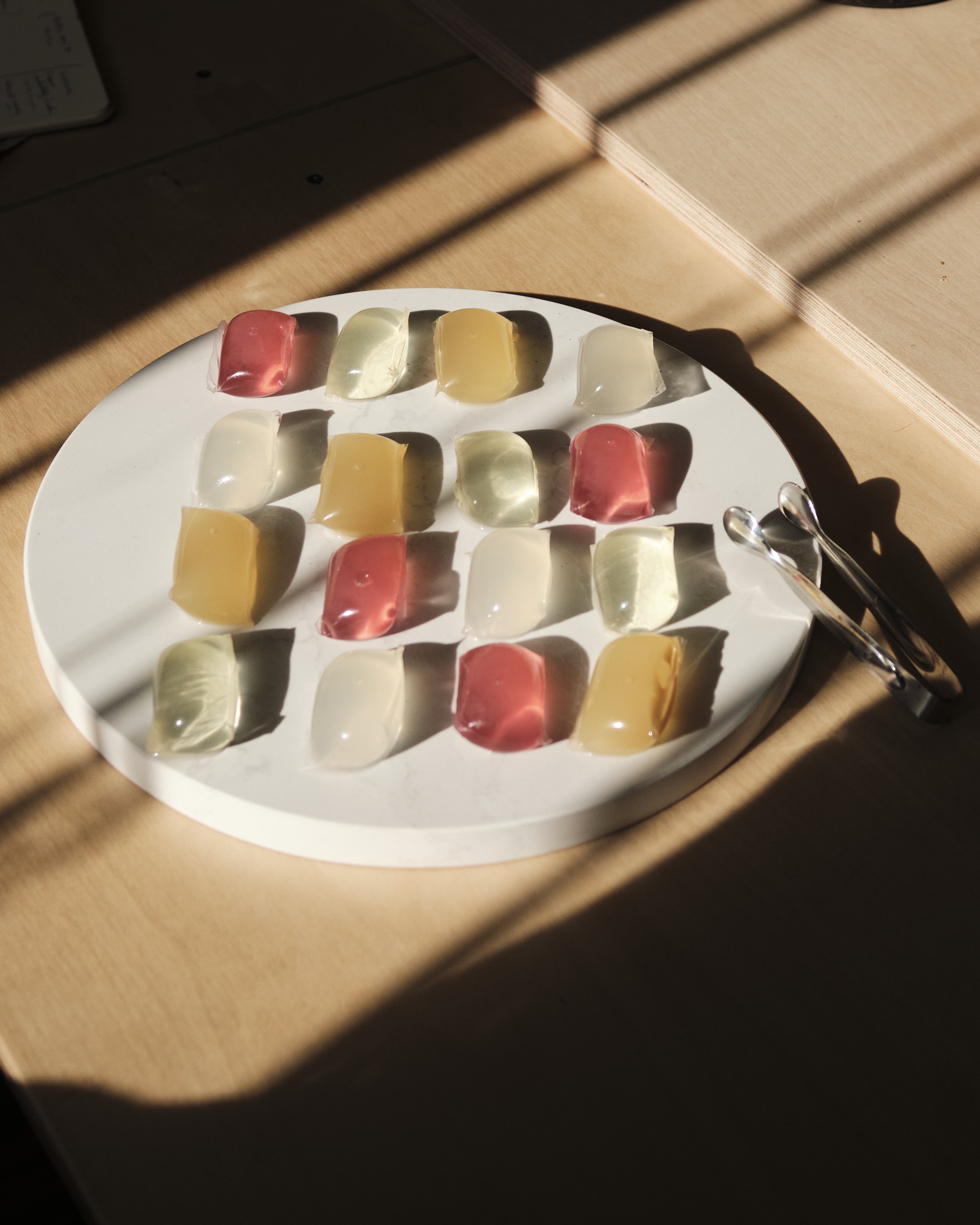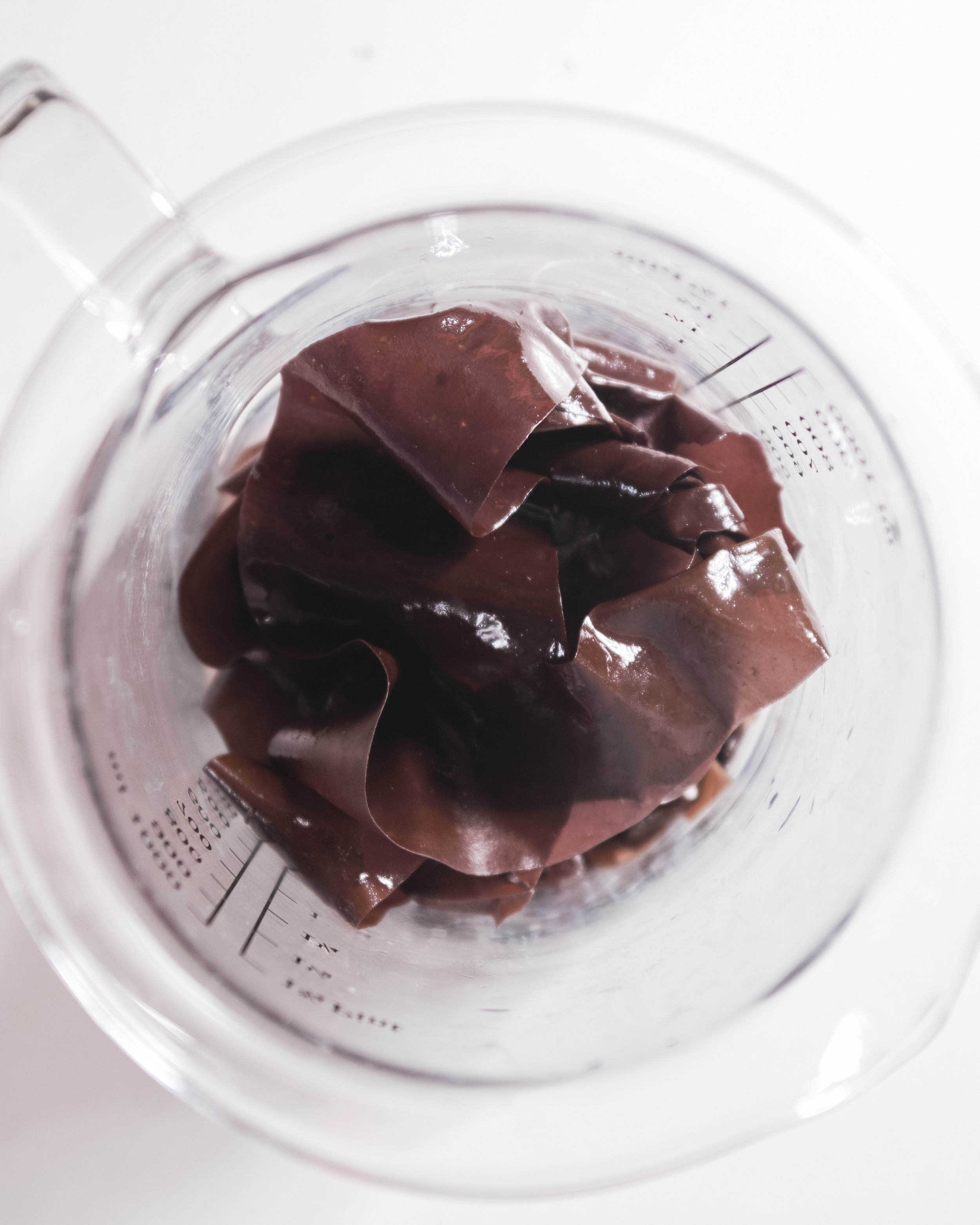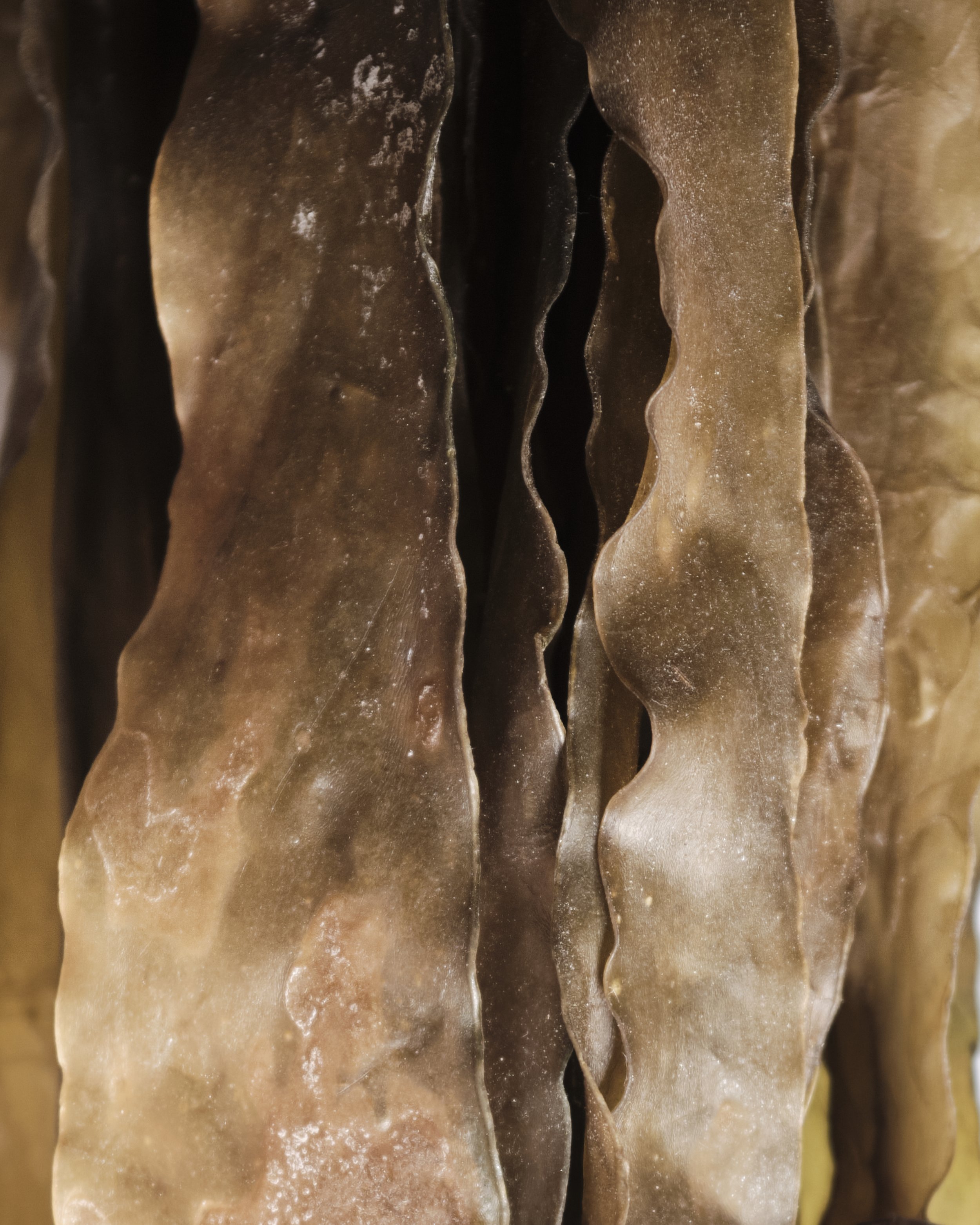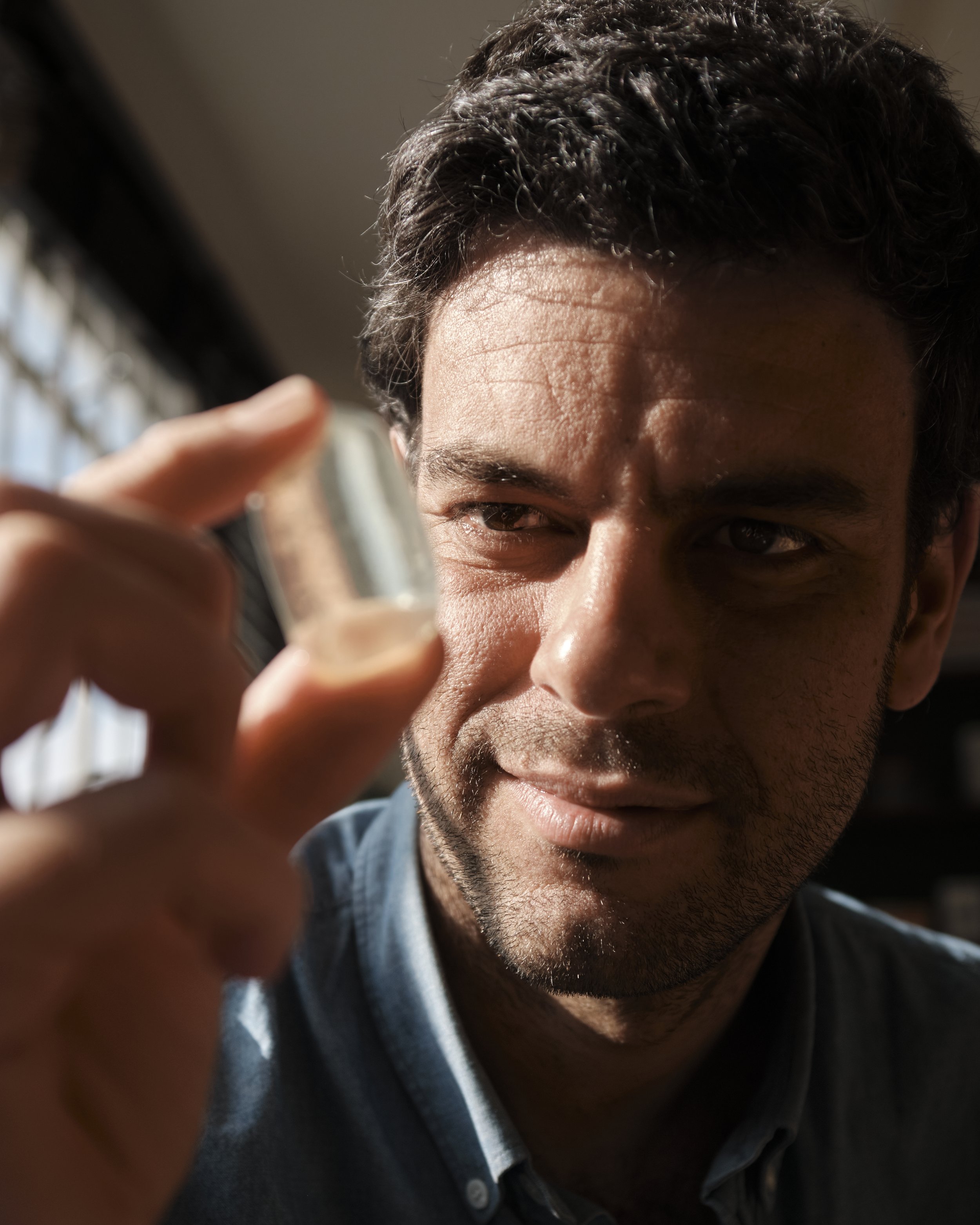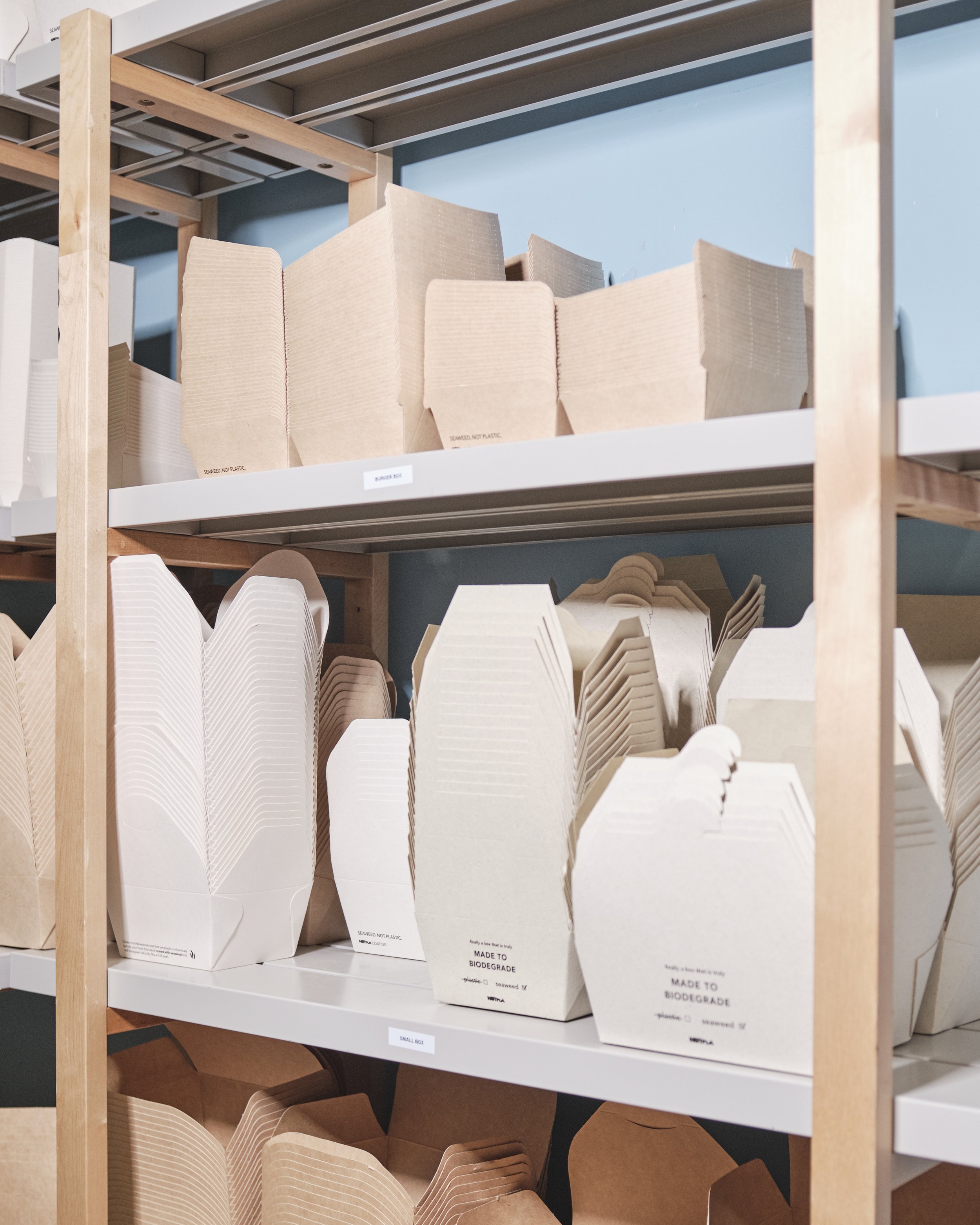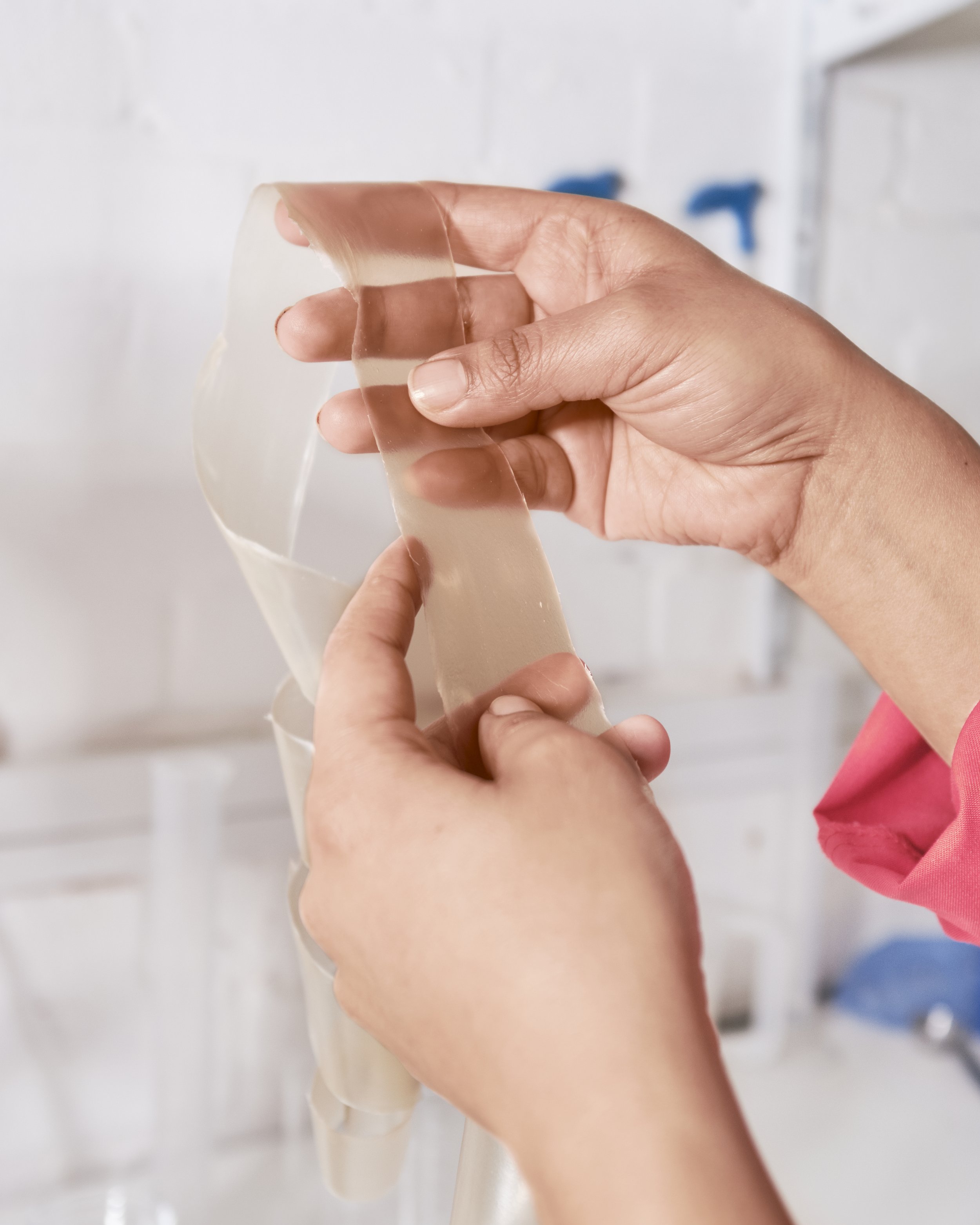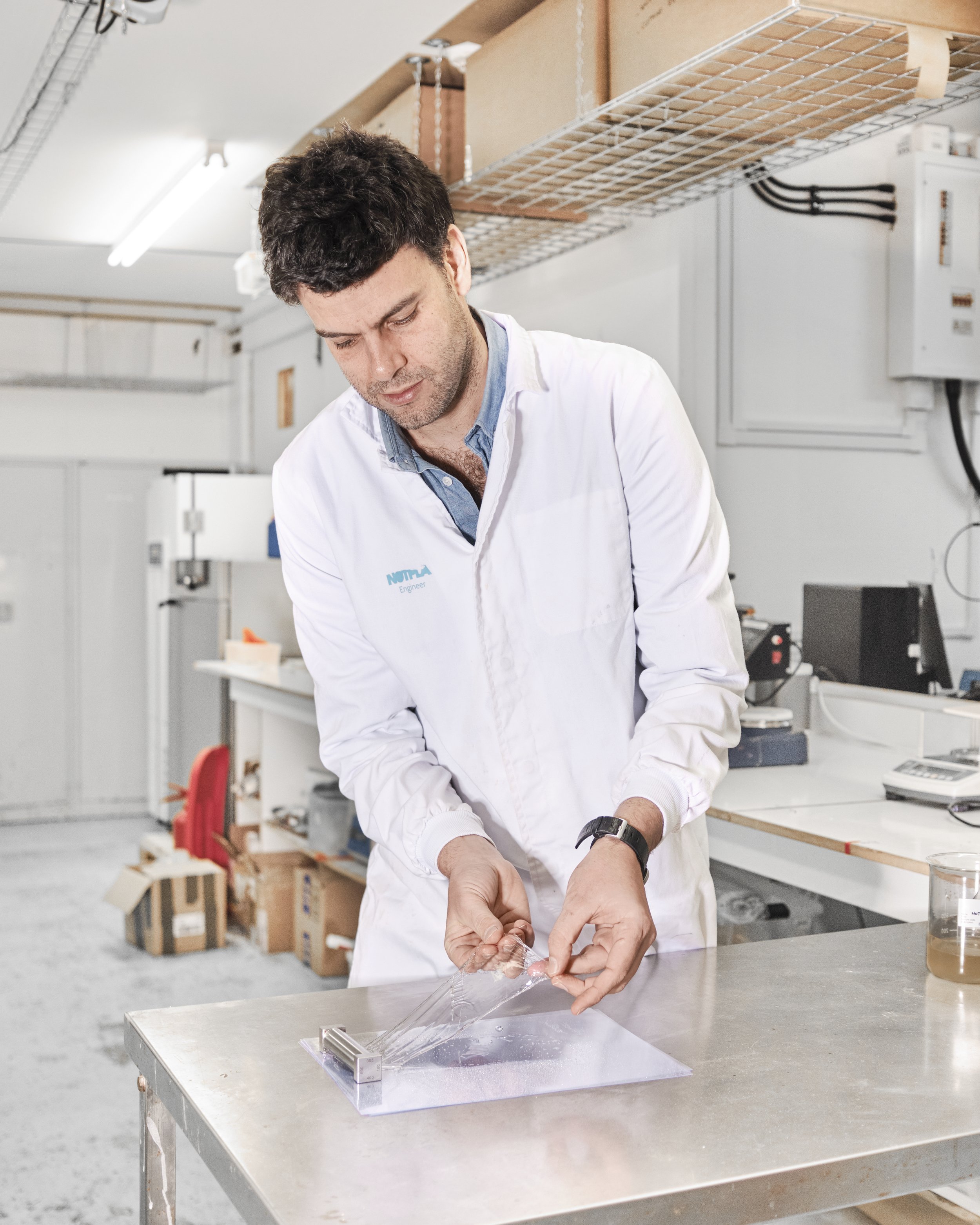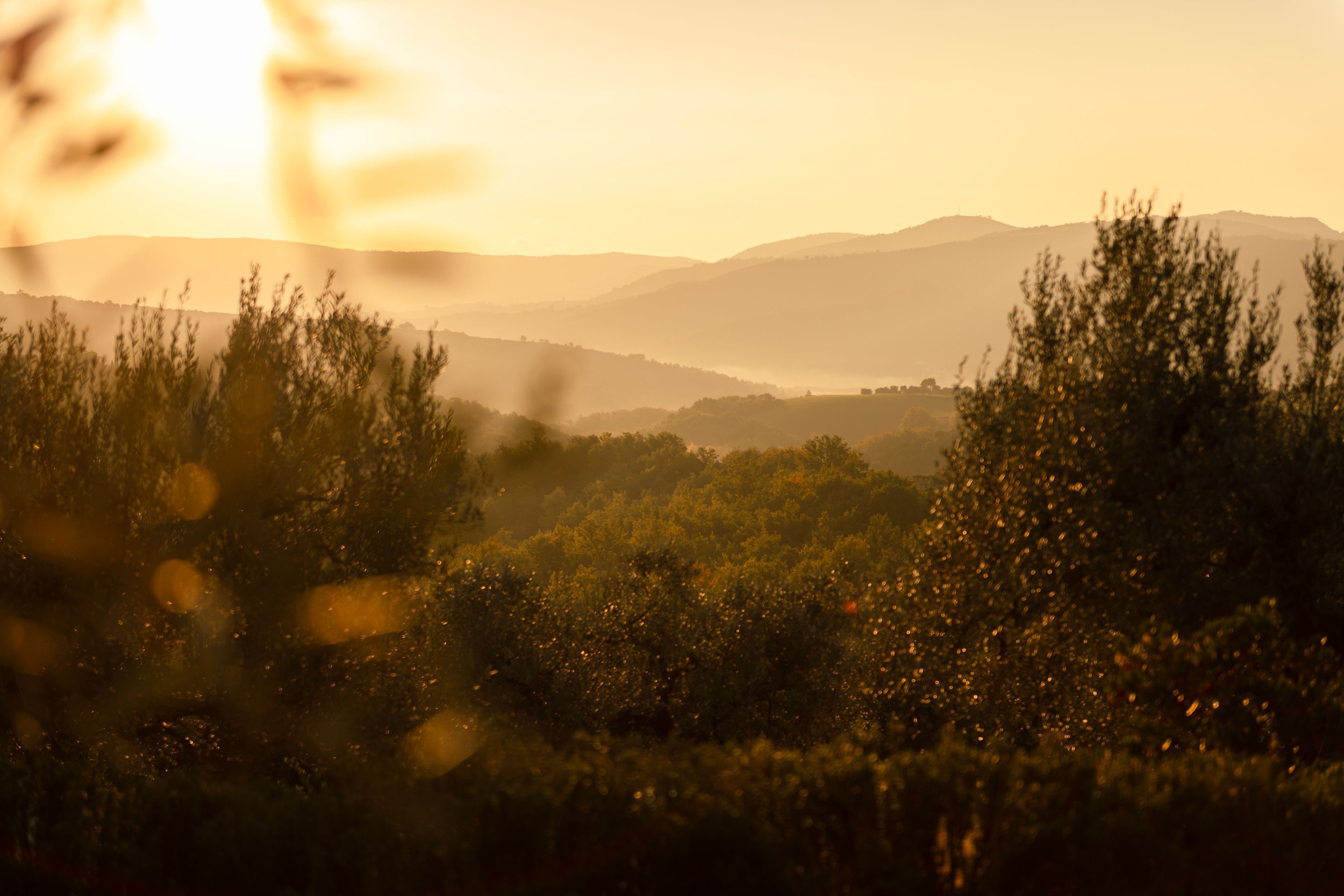Making Plastic Disappear With Notpla
Rodrigo Garcia Gonzalez walks us through his biodegradable world
Words by Farah Shafiq. Images by Daniel Lober
In a creative enclave by the canal in London’s Hackney Wick, the Notpla lab could quite easily be an artists studio or a low-key bar. It’s surrounded by like-minds – the team swap unused materials for beer with the brewery across the yard; and work with the zero-waste restaurant on the waterfront, plus a few other local businesses too.
The area has, it turns out, always been synonymous with collaborative invention. In a full-circle moment of synchronicity, it was right here in 1865 that inventor Alexander Parkes created Parkesine, a precursor to celluloid and the world's first man-made plastic – the very material that Notpla is now committed to making disappear.
Community, collaboration and circularity is a real driver for Notpla co-founder Rodrigo Garcia Gonzalez, and it’s paying off. In 2022 they scaled rapidly, receiving millions in funding, partnering with bigger brands and winning the Earthshot Prize in the category of ‘Build A Waste-Free World’. While others might have been overwhelmed by this swift ascent, the mood at Notpla HQ is still as excited, curious, industrious and clear on their mission as ever.
“We want to create the maximum impact, to put seaweed on the map,” Garcia Gonzalez tells Looms over coffee, in a light-filled meeting room above the more scientific lab spaces. “We are hoping to be seen as an ingredient brand, like Gortex or Lycra. To become a household name, like Tetrapack. We are not competing with them in terms of trying to make things last a long time, we’re on the other side, trying to make packaging disappear.”
“We have products that are quite novel, like the Ooho – you can eat the packaging, which is a challenging proposition that pushes boundaries, creates interest and speaks for itself,” he smiles, offering us a colourful capsule to taste. “Whereas other products don’t look particularly special, like our Coating for takeaway food boxes, but what’s cool is that it is invisible. These products need each other; one to communicate, and one to make an impact on a bigger scale. All our products have the potential to do good and create real change.”
Transforming seaweed into biodegradable packaging was Garcia Gonzalez’s launchpad, and now he’s turning his attention to other natural materials that have huge potential for similar use. If there’s anyone who could enthuse the uninitiated on the powerful potential of tomato skins and hyper-local manufacturing, it’s Garcia Gonzalez – as you’ll see in our chat below.
Let’s start at the beginning – how did you first get into seaweed?
Growing up in Spain I was quite lucky, there was a lot of financial support to study – so I did, until my early thirties, ending up with five Masters! During that time, I did various investigative projects with different materials. As an architect, I was interested in working with bigger structures and focusing on reusing and recycling: I built with water bottles, with plastic bags...
On one particular project we were figuring out how to deliver water without using plastic, and that’s when I first honed in on seaweed. Previously, I knew it had been used for making glass, gunpowder, fertiliser, etc. – but, in the packaging world, it was new. So, we gave it a go and made some early prototypes. They were not perfect, but they were a good starting point.
When did you know that this experiment was the one you wanted to level up?
As a designer, I try to give every creation the best life possible. It’s easy enough to make prototypes, but to industrialise and bring it to the market is the hard part. It was really down to a push from people’s initial reactions. We put a video of the early iteration online for creative comment and it got a lot of views, which gave us the indication that we might have something worth pursuing.
We put it forward for a few awards, and we won some funding; plus a grant from the European Union. Our first round of Crowdfunding attracted 900 investors who contributed from £10 to several thousands – some of those investors have now joined us in the team. So, it was a bit of a reactive process, rather than a specific plan. I’m not much of a planner, I prefer to go with the flow in terms of following whatever opportunities come.
How did things look in those early days? Do you miss anything about that time?
When we started, we didn’t have a lab, we just had a kitchen and we did things in a really lean and unprofessional way – which was great. I think it had a lot of benefits, because it allowed us to test things quite quickly. We were pretty fearless. Now, of course, we have safety protocols, proper equipment and proper training, it becomes a bit more restrictive in a way – I’m definitely not allowed into the lab without a coat and hair net!
It’s also quite hard to spend as much time as I’d like in the lab. It’s a dilemma, because I’m a founder but I’m also a designer – I didn’t study business or management, but that’s where I spend a lot of time, rather than having all the fun! I’m no footballer, but I think of my current role in terms of this analogy: I’m the coach, and even though I might love to play, my job is actually to help the players to do the best that they can. So, we train and move things forward together, and every win is a group win.
Now Notpla has really taken off, what has the transition been like for you?
As we’ve expanded our portfolio, I think it’s almost like having different kids with different abilities, trying to give them space to grow, being fair to each, supporting in different areas for them to make an impact.
I didn’t imagine we’d get to where we are now. With my designer mindset, I’m quite used to designing to a brief and then moving on – which on the one hand is fun, but at the same time rarely gives you the chance to see how that project develops out in the real world. So, it’s quite exciting as the founder of a startup to push it as far as you can, to stay with it and allow it to evolve and multiply.
What’s your favourite part of the process?
Personally, I really love making new things, it brings me a lot of satisfaction – I’m much more of a starter than a finisher, which I probably need to regulate. As a company, we want to make a bigger impact with the products we have. But, for me, it’s those first moments of connecting the dots, creating the prototypes and making people believe that this could be something down the line that are still some of the most enjoyable.
Is there a new material or system that you feel has a lot of potential?
Yes, several! In Parma, Italy, they produce a lot of canned tomatoes and this leaves a lot of waste tomato skins. Surprise surprise, these peels contain fruit components that are able to be transformed to package things like ketchup – it’s complete circularity. The tomato manufacturers we’re working with are a small startup, so they are very onboard with this type of thinking. We’re also making pipettes that hold olive oil and contain some olive stones. Always trying to find those circles.
On a bigger industry scale, there is a model called ‘wall-to-wall manufacturing’ pioneered by Logoplaste in Portugal, creating greater efficiency between packaging production and filling. It’s still plastic and it’s a linear system, but it exists in a close community which helps to lower the overall carbon footprint. Ideally we need to take this one step further, to create wall-to-wall-to-wall, where the waste material of each company goes back to them to be remade into their packaging – looking at problems and solutions more as one.
Tell us more about exploring the idea of hyperlocality...
We recently did pilots in Ghana and Chile, which was interesting as these are not markets we’re looking at from a commercial perspective, we’re looking more at the impact side of things. We’re hoping to impact, or at least understand some of the challenges of those communities. I think the people there were super enthusiastic, in terms of first reactions.
Another example is islands in the Caribbean, where they have less capacity to recycle, so there’s a lot of ocean pollution. We want to try to see if we can close those circles, staying reactive to the communities in which the problems exist, too – we can’t do it all ourselves, but we can see what we can do to help accelerate the necessary changes, which is exciting.
Any advice on what makes a successful inventor and innovation?
I think it’s a bit of everything! You need to be able to listen: to the people around you, to the environment, the materials – your context – and to be able to absorb and be curious about those things. You need to understand what could be improved, to hear and action the feedback. Positive attitude is key, you have to remain open to testing things; to know that you’re not going to get there in the first instance, and that’s part of the joy, taking projects as a live thing.
Innovation is quite hard to do, so say yes to the opportunities that come your way and be optimistic. If you block things it makes it hard to move forward. Ultimately, we’re building solutions for humans, so you can’t stay in the lab for too long.
How do you reframe the vast challenge of regenerative impact in a positive way?
The game of scales is a complex one: being able to do something in a few units and then replicate it in the millions; or being able to do something local, and then going global with the same impact. How to do something in Hackney Wick that could also work in South America? And how to approach it in the most sensible and sensitive way, within different ecosystems and communities, and with different products?
I don’t believe in a silver bullet, there’s no one solution that works for everything – that’s what at one point plastic was thought of as. Now, we want to think more in a more circular way, inspired by nature. There’s a different type of peel for each fruit, for example, and that brings a lot of lovely versatility. Imagine if just like the discarded peel that composts and the discarded seeds that lead to a new tree, you could discard a plastic bottle or packet and something new could grow... We are far from that at the moment, but I find the idea of regeneration is very inspiring.




